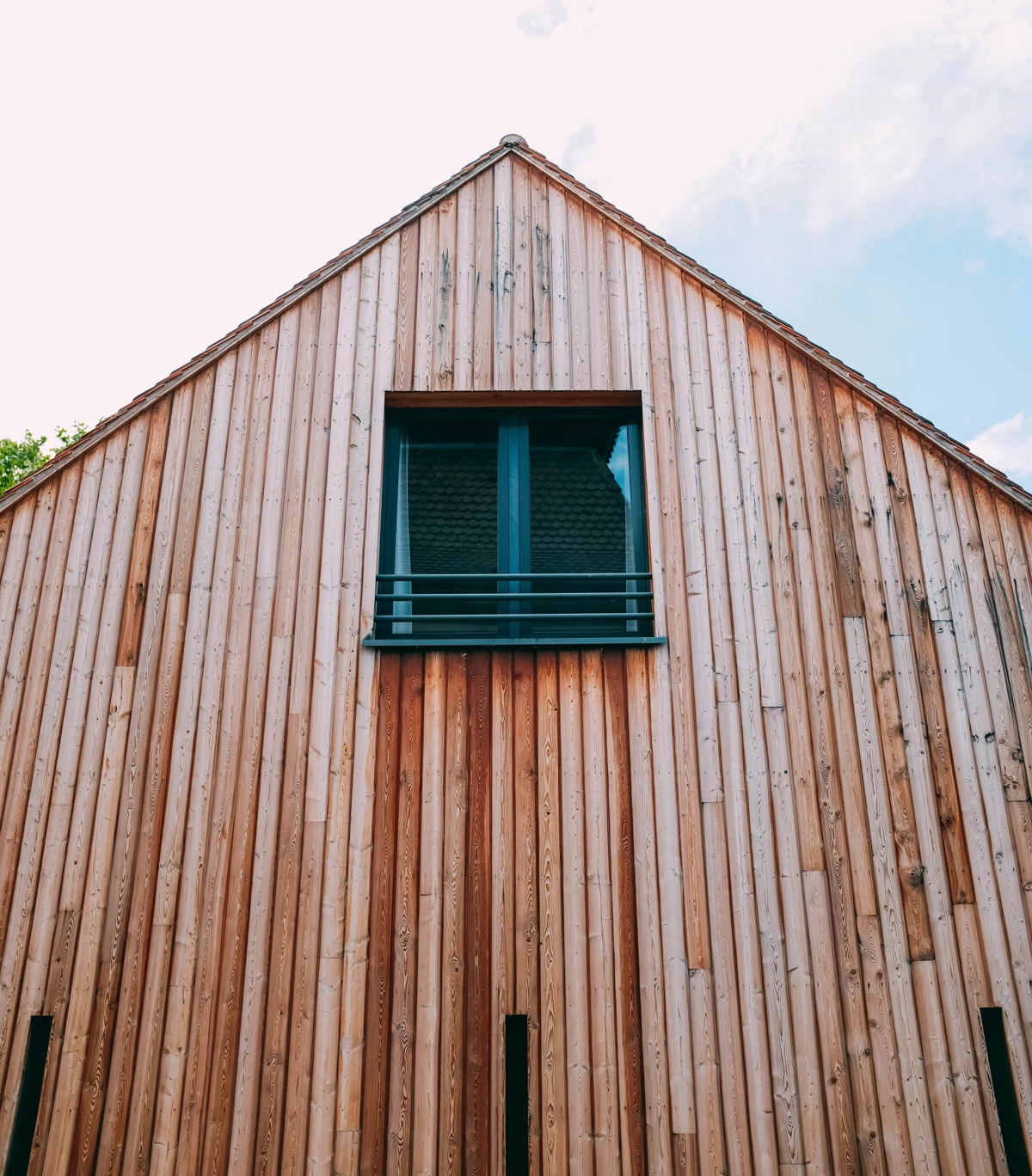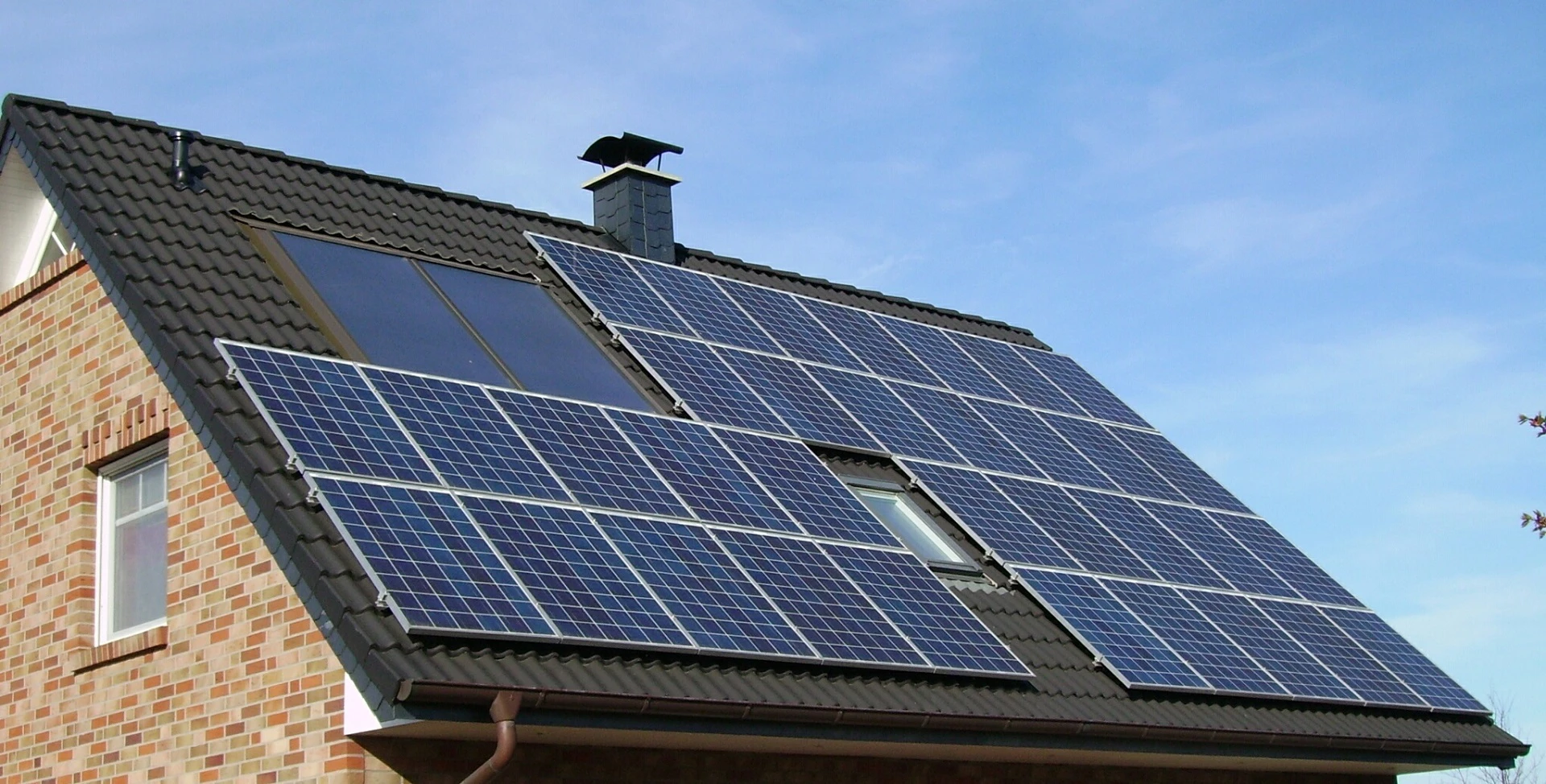08/10/2019 | Category: Home Insurance

When you picture an eco-home, you might imagine a timber-clad structure complete with living roof and solar panels. But eco-homes come in all shapes, sizes and styles, and their green credentials might not be totally obvious at first glance.
Eco homes are environmentally friendly and have much lower running costs compared to their non-eco home counterparts. It’s easy to see why so many people dream of a green self-build of their very own.
Why build an eco-friendly house?
Building an eco-home in an environmentally-friendly way has many benefits. Not only is it incredibly rewarding and helps you reduce your carbon footprint, it also means you can enjoy lower bills, increased energy efficiency and a home that requires less maintenance over time.
Another benefit is that eco materials are free from harmful chemicals, finishes and pollutants, making them safer and healthier within a home environment.
And let’s not forget that eco-friendly homes are becoming increasingly popular with buyers. Green homes have become highly sought-after and can attract a much higher asking price than non-green homes.
How to build an eco-friendly home
Green can mean different things to different people, but a sustainable build will always make good economic sense.
You may choose to build your eco home in the most sustainable way possible. This means obtaining materials and labour locally and from sustainable sources. Known as embodied energy, this minimises the amount of energy that goes into building your eco home.
Or, you may decide to take a more relaxed approach to the build, introducing eco-friendly elements to the design and build that meet eco standards.
Understanding eco home standards
There are a number of ways to accredit eco homes. These set certain standards which buildings have to meet – with some standards more stringent than others.
For example, if you’re aiming to build a more sustainable, environmentally-friendly home, then the standards can be fairly relaxed. However, if your aim is to build a truly zero-carbon property, the standards you are required to meet will be much higher.
Common eco home standards used in the UK include the Code for Sustainable Homes and Passivhaus, but there are a number of other national and global standards you could abide by when building your new eco home. Your planning permission may require your new build meets a certain level within one of those standards.
The Code for Sustainable Homes is a government scheme that rates a new home from Level 1 to 6. It measures new homes on energy and carbon emissions, water, materials, surface water run-off, waste, pollution, health and wellbeing, management, and ecology.
Passivhaus is an international low-energy design standard, with strong emphasis on the building fabric. A Passivhaus can be built to almost any construction system and will typically feature lots of insulation, triple-glazed windows with insulated frames, amazing airtightness levels and mechanical ventilation with heat recovery.
Choosing the right building materials
Your choice of building materials is all important when it comes to building your own green home. The greenest of building materials include sheep’s wool, cellulose (recycled newspaper) and wood fibre. These can be reused and recycled and are fully biodegradable.
However, these aren’t the only materials you can use in your self-build to be green.
Advanced construction technology means that if you are building your own eco-friendly home, you are not restricted by building materials or design choices. It’s even possible to build an eco-home using resource-intensive materials such as concrete. It’s possible for a house to repay its carbon debt by achieving outstanding in-house energy performance levels and thermal efficiency.
Glazing is a vital consideration in the quest for eco-friendly living. If you want Passivhaus standard glazing, you’ll need your windows and doors to be triple-glazed. However, good-quality double glazed windows can also offer high energy efficiency.
Depending on the materials you use to build your own home, insurance is another financial consideration. Timber-framed houses are popular with the eco-home self-build crowd, but they place a house into the non-standard home insurance category.
The same goes for flat roofs (perhaps planted with sedum); once your home build is complete, you might find that you need a non-standard home insurance policy.
What are the costs of building an eco-friendly home?
Self-build eco-homes can look stylish and work out as very cost-effective. And the eco-friendlier you can make the property, the more cost-effective it will be in the long term.
Kevin McCloud, presenter of TV show Grand Designs, estimates that the average cost of building your own home is between £1,500 and £2,000 per square metre. If you want to meet high eco-home standards, you might find that the cost is considerably more.
Also, McCloud’s estimate only applies if you stick with your original design and specification. Changing your plans along the way can add a substantial amount to your overall build costs and potentially push you over budget.
Breaking down the average costs of building an eco-friendly home, the cost of building the house itself might be around 70% of the total spend. The cost of the foundations, kitchen fit, outside landscaping, utilities and insurance will make up the remaining 30%.
In addition, you may want to commission an architect to create a design that’s specific to your needs and site.
The location of your new green eco-home is important – as well as future value it can also impact future insurance of your property. Whether you are looking at an inner-city plot or one that is more remote in the rolling British countryside, considerations such as flood risk or subsidence may mean you need to find non-standard home insurance.
The future of eco-friendly homes
A common misconception is that building a green home is something you have to opt into. However, current building regulations have stringent requirements, so anyone embarking on a self-build will end up with a greener, eco-friendlier project than they would have done a decade ago.
If you’re thinking about building an eco-friendly home, make sure you budget for all your costs throughout the build and beyond.
Insurance Choice can help you find competitive non-standard home insurance to protect your green home. Get in touch with our team of specialists today to find out more about protecting your home for many eco-friendly years to come.
